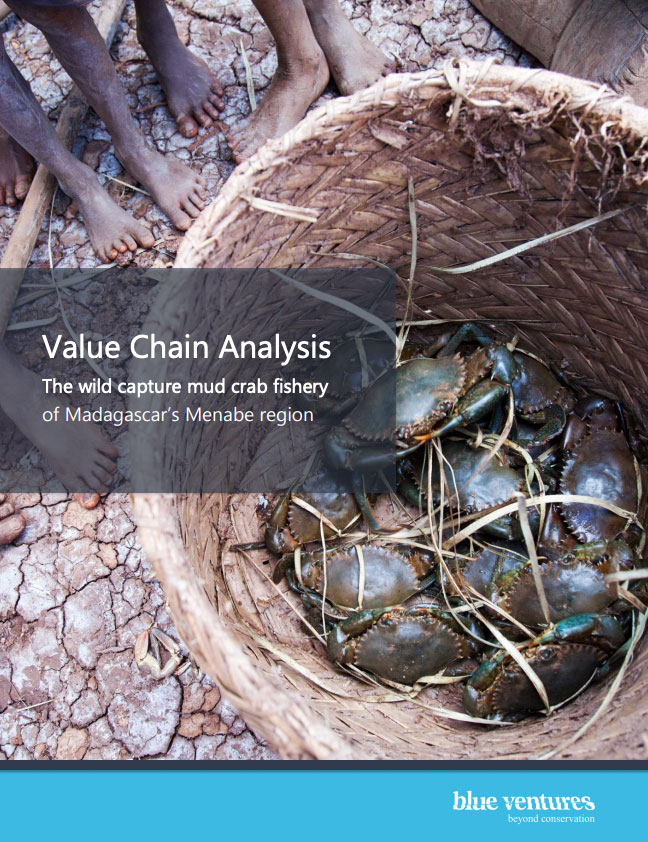© Blue Ventures 2018 . The copyright in this publication and all text, data and images contained in this document, unless otherwise indicated, belong to Blue Ventures.
Executive Summary
Madagascar’s fishers are some of the poorest people in the world. In some regions, such as Menabe, around 41% of the adult population in coastal communities is reliant on fishing as their primary source of income or protein. The mud crab (Scylla serrata) fishery in this region is an important source of income for many fishers, as it requires minimal investment to catch and sell crab, and there is consistent demand, driven primarily by international markets. However, despite the lucrative market for mud crab, fishers are unable to capture the majority of financial benefits and are instead often locked in cycles of debt and poverty. This study presents an analysis of the mud crab value chain, with the aim of better understanding market issues and the challenges faced by different stakeholders. This report also makes recommendations about how these can be overcome.
Although the fishery only accounts for a small proportion of local employment, it is associated with high levels of dependence by its key stakeholders. Of the 98 crab fishery stakeholders interviewed, 90% of crab fishers, 81% of market vendors, 89% of local collectors and 100% of regional collectors were reliant on mud crabs for the majority of their income.
This study found that mud crabs are sometimes consumed by the fishers’ families, but more often stored in mud and sold to a range of buyers. Fishers primarily reported selling to local collectors based in the community (96% of those surveyed), and a smaller proportion also selling to local hotels. The reliance fishers have on a single buying group has encouraged a buyers’ market, where local collectors dictate prices. This imbalance in market power is compounded by the advanced pay used to purchase crabs, creating a cycle of debt that further entrenches the dependence fishers have on local collectors. At each subsequent level in the value chain, routes to market diversified and dependence between stakeholder groups became less pronounced.
The value of crab increased as it moved along the value chain. Grading (paying a higher price for better quality crabs) was the only mechanism used to add value to crabs, practiced almost solely by collectors. Within the value chain it was more common for value to be lost than added. Mortality and damage during storage and transportation represent the largest losses in the value chain, with an estimated cost for fishers and local collectors equal to around 21% of their total profits. Although it was not possible to calculate the cost of this loss to regional collectors, again mortality and spoilage increased in frequency at every stage in the value chain. It is therefore likely that this cost is even greater for regional collectors than for local collectors.
At present, demand for mud crab outstrips availability. This highlights a market appetite for higher volumes of crab, including value added products, and presents the greatest opportunity to increase the value within the value chain. However, this imbalance also presents the greatest threat to sustainability of the fishery. Higher levels of exploitation are the obvious tool to meet demand, but are likely to exacerbate the current level of over-exploitation. This could result in reduced crab availability and even stock collapse. If demand could instead be met by reducing mortality and spoilage, the value of this currently wasted portion of the catch could be realised within the value chain. Recommendations made in this report include assessing opportunities for freezing, ranching and fattening of crabs, in addition to exploring more direct routes to market for local fishers.

















